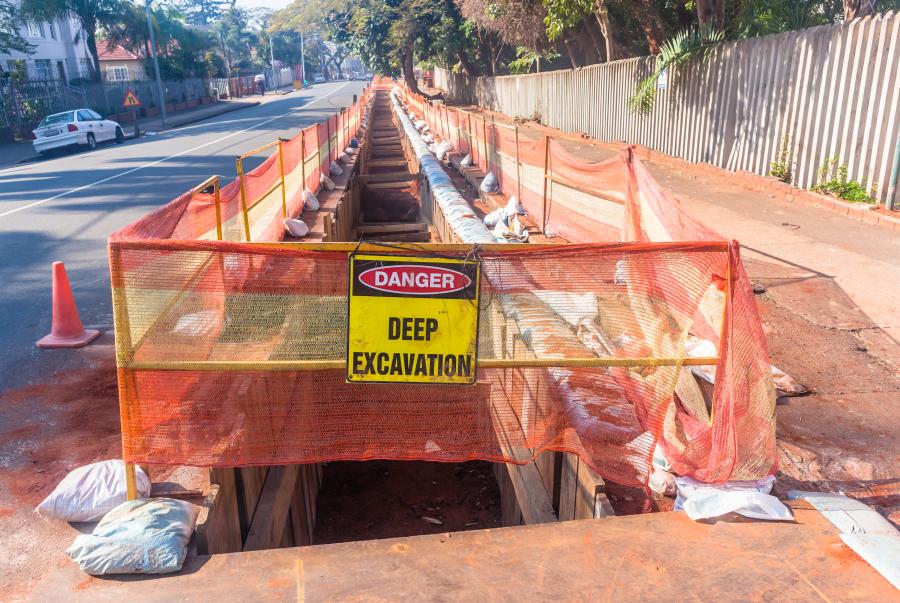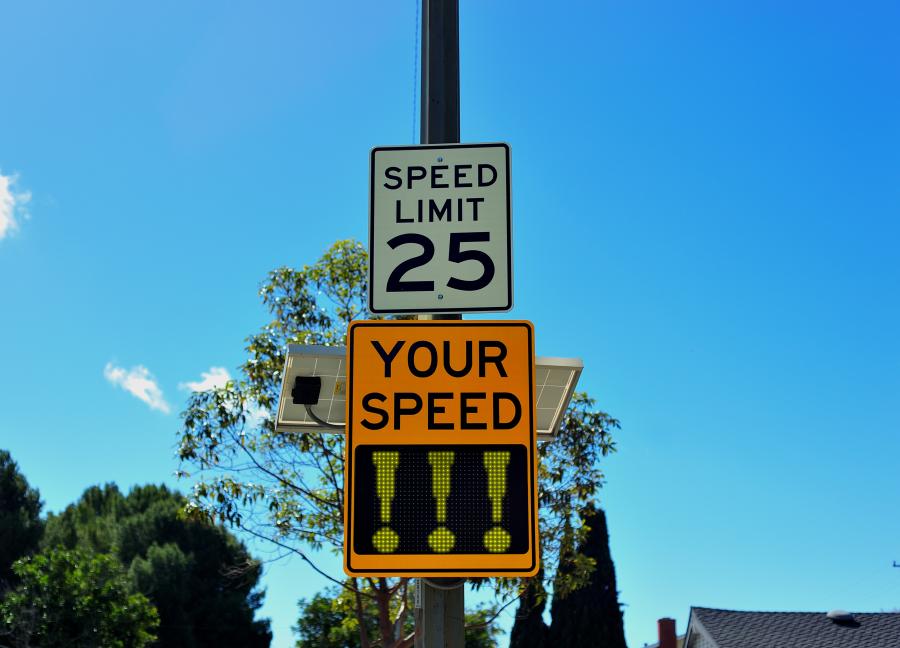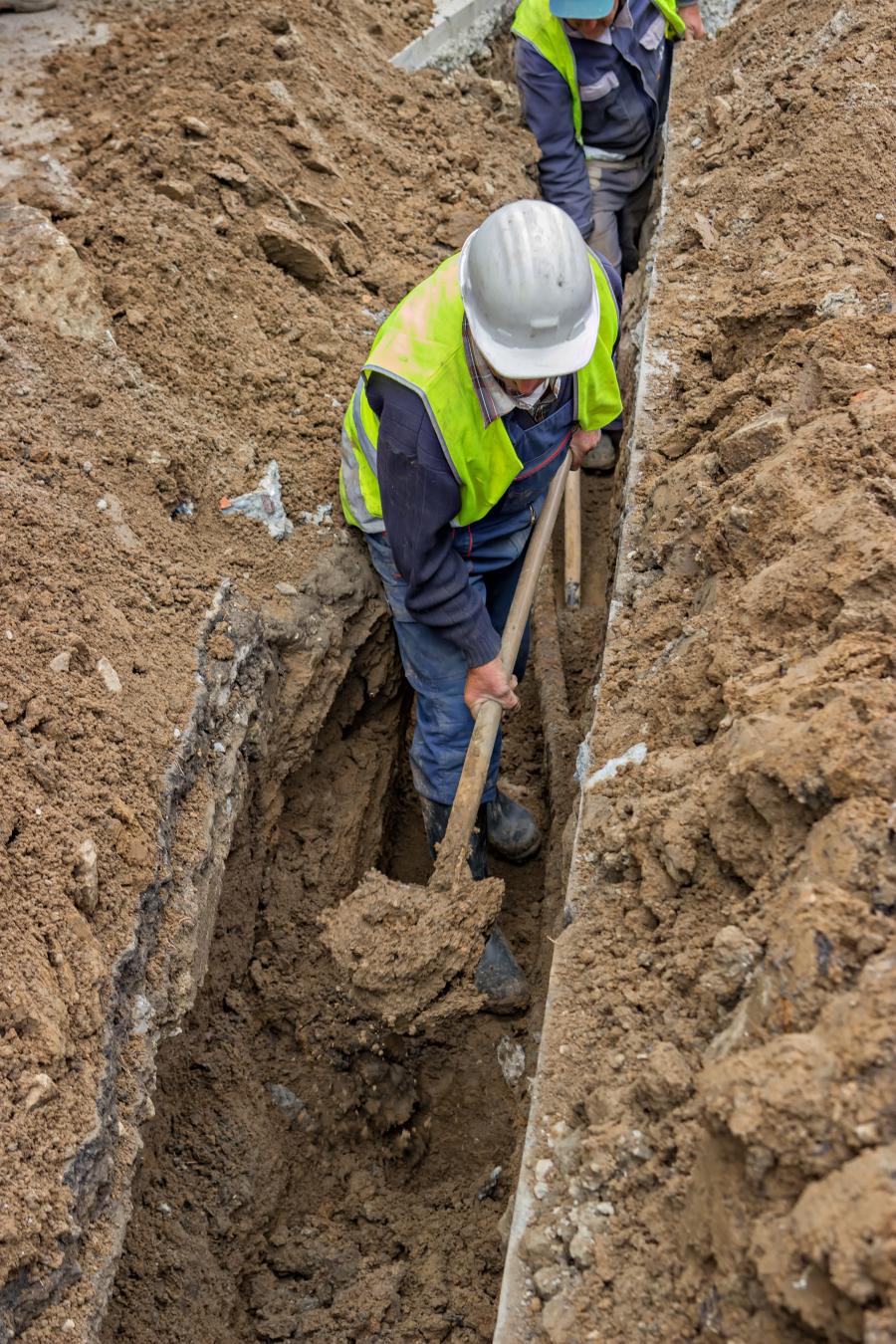OSHA inspectors are now required to stop and inspect any construction site where trenching or excavation are taking place.
The DOL and OSHA are laser-focused on highway worker safety this construction season. The deaths of six Maryland highway workers on the job recently prompted demands that the feds realize workers, too, are vulnerable road users. Meanwhile, trenching-related deaths doubled in the past two years, and the agencies are recognizing trench workers are at risk, as well.
A worker is three times more likely to die on a construction site than in general industry, said Scott Ketcham, OSHA directorate of construction director.
On the road surface, more than 45 percent of worker deaths at highway construction sites were caused by vehicles striking workers on foot.
In 2020, 857 people died in 774 crashes in work zones, marking a 10-year high for deaths and crashes in road construction areas. Of those fatalities, 117 were road construction workers and the others were motorists and passengers, according to a USA Today report.
Work zone location also plays a factor in these deaths, reported the National Work Zone Information Clearinghouse.
"Some 40 percent of all work zone crashes from 2018 to 2020 happened on an interstate in either an urban or rural setting," the organization said.
Principal arterials, freeways and expressways made up more than 36 percent of the total, according to the clearinghouse report.
The six construction workers were killed in March when a driver attempted to change lanes on a Maryland highway. The driver hit the front bumper of another vehicle before careening into the construction zone.
"We will never accept that work zone intrusions are inevitable," said Dave Bauer, ARTBA president. "Safety first; safety always."
State Agencies in the Zone
The Maryland deaths immediately signaled industry demand for safer highway work zones for both construction workers and drivers.
"This tragic situation underscores the need to ensure the safety of all roadway users," said Arkansas Rep. Rick Crawford during a transportation and infrastructure hearing on Capitol Hill.
That includes "construction workers who are simply trying to do their job and help improve America's infrastructure," added Crawford, chair of the highways and transit subcommittee.
But drivers suddenly happening upon slow or stopped traffic are usually the cause of work zone crashes, said a transportation researcher.
"You expect people to drive slowly in work zones," said Julius Codjoe, a research administrator of the Louisiana Department of Transportation and Development. "The more unexpected traffic queues you have, the more safety issues that are going to come up."
The FHWA believes a combination of factors, including speeding, distracted driving, tailing and unexpected lane-pattern changes, contribute.
In March, ARTBA pushed FHWA to ensure road construction workers are protected as "vulnerable roadway users." The association cited a 2018 industry study that found 39 percent of pedestrians killed at roadway construction sites were workers.
At-risk workers "are exposed to hazards from motorists, including speeders and distracted drivers," said ARTBA.
A review of Bureau of Labor Statistics data indicates as many as 200 roadway workers are killed on job sites annually. The association urges FHWA and states "to ensure policies and programs are in place to protect vulnerable road users, including workers."
ARTBA also wants FHWA to update regulations governing positive separation techniques used to protect workers from traffic.
At the state level, there are tools transportation agencies can utilize to calculate roadway capacity and determine traffic queues, said Codjoe. The Highway Capacity Manual is one tool that can help warn unsuspecting drivers and avoid work zone crashes, he said.
The most recent edition of the manual was released in early 2022, Codjoe wrote in a Transportation Research Board (TRB) blog post.
"What we've learned," said the researcher, "is that ultimately heavy vehicle percentages make the biggest difference in capacity,"
The TRB believes one way to improve work zone safety is to use transportation management plans. Among the resources TRB suggests is the Use of Safety Management Systems in Managing Highway Maintenance Worker Safety. It is a compilation of the work zone safety strategies used by Connecticut, Nevada, Tennessee, Texas and Virginia.
The AAA Foundation for Traffic Safety also researched specific countermeasures designed to reduce highway work zone crashes. Focusing on vehicle-mounted electronic variable message signs or VMSs, the foundation noted they were "highly effective" in reducing highway work zone crashes.
A University of Missouri study found that a self-driving truck, trailing a vehicle and crew, can reduce worker injuries in construction zones. According to TRB, the Missouri research found merit in the use of truck-mounted attenuators (TMAs), or "crash cushions."
The devices were effective when they were positioned at the end of mobile work zones to absorb the impact of a potential crash.
"The study found, though, if the vehicle equipped with the TMA is a self-driving truck, more injuries could be avoided."
The Colorado DOT plans to make work zones safer by expanding its use of self-driving trucks to protect workers.
"For the men and women in our work zones, Colorado's roads are their office," said Shoshana Lew, Colorado DOT executive director. "Innovations such as automated attenuators can be life-saving."
Minnesota DOT is installing "speed wizards," dynamic speed-limit signs requested by workers, according to the Minneapolis Star Tribune. The electronic signs show speed limit for the work zone at the top and a vehicle's speed at the bottom, flashing when drivers are speeding.
"We are trying to combat speeds," said Michelle Moser, MnDOT work zone engineer. "It's one of our top priorities. When something is flashing at you, that does tend to slow down the majority of drivers."
From 2019 to 2021, there were 7,823 work zone crashes in the state, according to the Star Tribune. That resulted in 92 serious injuries and 28 deaths in Minnesota and prompted Moser to issue a plea to drivers.
"Work with us," Moser said. "Everybody has a role to play in work zone safety. Slow down and pay attention."
OSHA Gets Deep in the Trenches
DOL and OSHA also are paying attention to construction sites where trenching and excavation take place.
In early April, two construction workers died when a trench collapsed at JFK Airport in New York City. The crew was relocating utility lines near a cogeneration plant for a JFK redevelopment project. Though emergency workers attempted to rescue them from the rubble, the construction crew members suffered fatalities.
Because of alarming trench fatality numbers, OSHA compliance officers are now instructed to inspect any work site where trenching is taking place. According to the National Law Review, any trenching accident and fatality will be scrutinized for potential employer criminal liability.
"If trenching protection is on site and not in use, this will be a significant factor in OSHA's compliance review."
Noting that 39 workers were killed in trench or excavation work in 2022, the industry launched a Midwest regional outreach campaign. OSHA will work directly with the entire industry to reduce injuries and fatalities in one of the nation's most hazardous lines of work.
"A trench collapse can bury workers under thousands of pounds of soil and rocks in seconds," said Bill Donovan, OSHA regional administrator. "With proper training and use of required safety procedures, incidents like these can be prevented."
He said OSHA and industry employers are working to raise awareness of hazards and protective measures. They're also joining forces to "educate employers on how they must protect workers."
Agencies and associations across the Midwest are collaborating on the onsite consultation projects across OSHA Region 5.
In 2022, 311 trenching and excavation inspections were conducted at sites in Illinois, Ohio and Wisconsin, according to the agency.
"Six of the inspections followed incidents in which workers suffered fatalities," OSHA noted.
The deaths happened from falls into a trench, being pinned between equipment, a cave-in or an asphyxiation by hazardous gases.
Industry employers and workers should remember the following essential trench safety standards:
- Protective systems must be in place for trenches 5-ft. deep or deeper. These systems include benching, sloping, shoring and shielding.
- A registered professional engineer must approve trenches of 20 ft. deep or deeper.
- A competent person must inspect trenches daily — and as conditions change — before anyone enters a trench.
"The competent person must be able to identify existing and predictable hazards, soil types and protective systems."
They also must have authority to take prompt corrective action to eliminate those hazards:
- Excavated soils must be kept at least 2 ft. from trench edges.
- Underground utilities must be located and marked before digging begins.
- Ladders must be positioned every 25 ft. of lateral travel for safe entrance and exit from the trench. CEG
Lucy Perry
Lucy Perry has 30 years of experience covering the U.S. construction industry. She has served as Editor of paving and lifting magazines, and has created content for many national and international construction trade publications. A native of Baton Rouge, Louisiana, she has a Journalism degree from Louisiana State University, and is an avid fan of all LSU sports. She resides in Kansas City, Missouri, with her husband, who has turned her into a major fan of the NFL Kansas City Chiefs. When she's not chasing after Lucy, their dachshund, Lucy likes to create mixed-media art.
Read more from Lucy Perry here.
Today's top stories
















